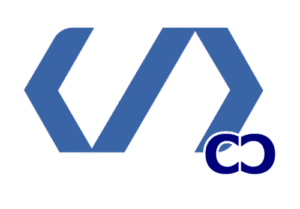As we enter 2025, IT development is set for big changes. We’re seeing a major shift in how technology impacts our lives. New innovations are changing the future of IT in exciting ways.
The IT development trends of 2025 aim to make our world more connected and smart. Cloud computing is a key player in this change. It’s deeply affecting software technology.
For more details or to learn more, reach out to info@consac.dev. We’re eager to dive into these trends with you. We aim to share knowledge that’s both useful and motivating.
The Evolution of Information Technology
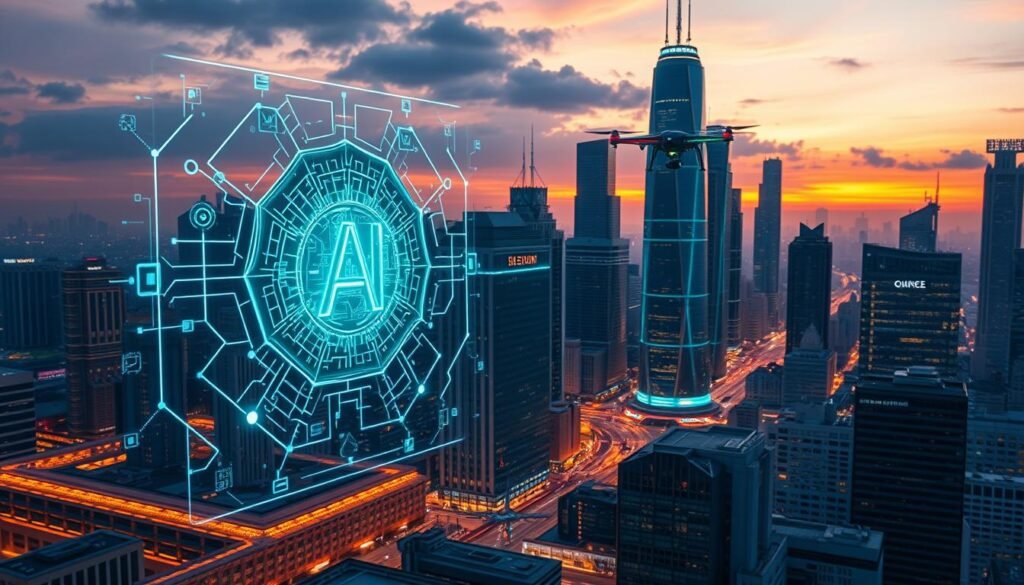
Information technology has come a long way from its early days to today’s AI and cloud computing. We’ve seen big changes in IT, from the first computers to the tech we use every day. These changes have made a big impact on our lives and businesses.
Historical Context of IT Development
The history of IT is filled with important moments. The first computers in the mid-20th century started the digital age. Mainframe computers were the first to change data processing, helping businesses work better. Then, personal computers in the 1970s and 1980s made technology available to everyone.
The 1990s brought the internet, speeding up tech changes. The internet connected the world, started e-commerce, and shared information like never before. This time also saw better software, making apps easier to use.
Milestones Shaping the Future
Looking ahead, IT is set for big changes. Artificial Intelligence (AI) is key, improving things like machine learning and predictive analytics. AI is making IT more efficient and opening up new business ideas.
New software like cloud computing and cybersecurity is also important. These tools are making businesses more flexible, safe, and competitive. Cloud computing lets companies grow fast, and cybersecurity keeps them safe from threats.
For more on how these trends are changing IT, contact info@consac.dev.
Key IT Development Trends for 2025
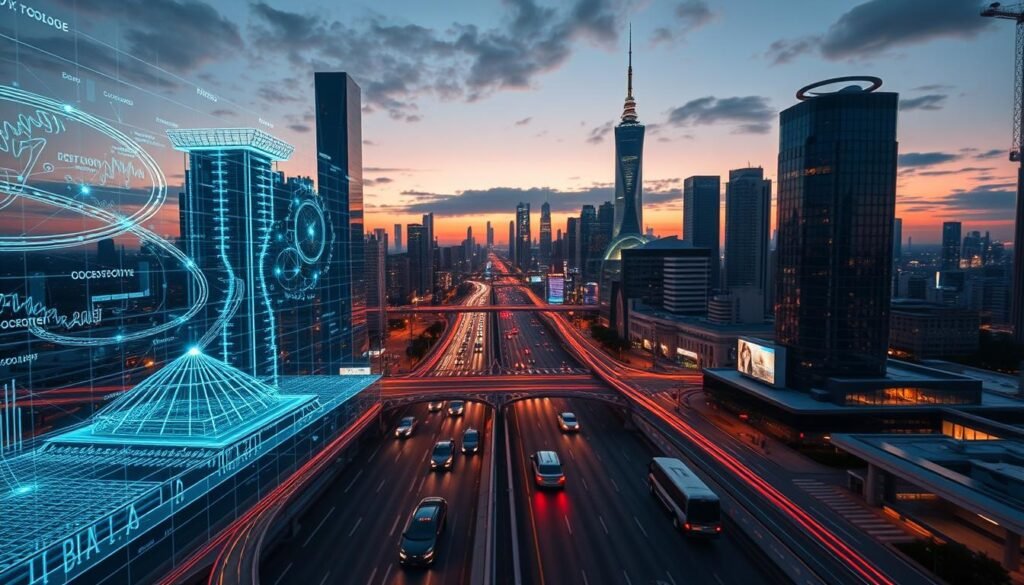
We are on the cusp of a new era in IT development, with 2025 set to bring about revolutionary changes. As we look to the future, it’s clear that several key trends will shape the IT landscape. These trends are driven by data-driven technologies and innovative strategies.
The IT industry is evolving rapidly, with advancements in various fields transforming how businesses operate. Understanding the emerging trends is key for staying ahead of the curve.
Artificial Intelligence Advancements
Artificial intelligence (AI) is becoming increasingly sophisticated, with significant advancements expected in 2025. AI will continue to enhance IT innovation strategies by providing more accurate predictions, automating complex processes, and improving decision-making.
One of the key areas where AI will make a significant impact is in predictive maintenance. By analyzing data from various sources, AI can predict failures and suggest preventive measures. This reduces downtime and increases overall efficiency.
Quantum Computing Breakthroughs
Quantum computing is on the verge of breakthroughs that will revolutionize data processing. With the ability to perform calculations at unprecedented speeds, quantum computers will solve problems that are currently unsolvable with traditional computers.
This technology has the power to transform fields such as cryptography, drug discovery, and optimization problems. As quantum computing advances, we can expect significant improvements in data-driven technologies.
Edge Computing Technologies
Edge computing is transforming how data is processed by bringing computation closer to the source of the data. This reduces latency and improves real-time processing capabilities, making it a critical component of IT innovation strategies.
With the proliferation of IoT devices, edge computing will play a vital role in managing vast amounts of data. By processing data at the edge, businesses can respond more quickly to changing conditions and improve overall efficiency.
For any inquiries or further information, please contact info@consac.dev.
The Role of Cloud Computing in the Future
As we look ahead to 2025, cloud computing is evolving fast. It’s becoming key in the IT world. Its flexibility, scalability, and resilience are vital for businesses in the digital age.
Cloud computing is changing how businesses work. It lets them easily meet changing demands. We’re seeing more advanced cloud strategies that boost efficiency and innovation.
Hybrid Cloud Solutions
Hybrid cloud solutions are a big step forward. They mix public and private cloud services. This gives businesses a flexible and scalable IT setup.
Key Benefits of Hybrid Cloud:
- Enhanced flexibility and scalability
- Improved cost efficiency
- Better data management and security
For example, a company can keep sensitive data in a private cloud. But use a public cloud for less critical tasks. This way, they use resources wisely and reduce risks.
Multi-Cloud Strategies
Multi-cloud strategies use many cloud providers for different needs. This helps avoid being stuck with one vendor. It also boosts performance and disaster recovery.
Advantages of Multi-Cloud Strategies:
| Advantage | Description |
|---|---|
| Avoiding Vendor Lock-in | Using multiple cloud providers to prevent dependence on a single vendor. |
| Enhanced Performance | Selecting the best services from different providers to optimize performance. |
| Improved Disaster Recovery | Distributing data and applications across multiple clouds to enhance resilience. |
By choosing a multi-cloud strategy, businesses keep control over their IT. They avoid being tied to one provider.
For more info on how cloud computing can help your business, contact us at info@consac.dev.
Software Technology Innovations to Expect
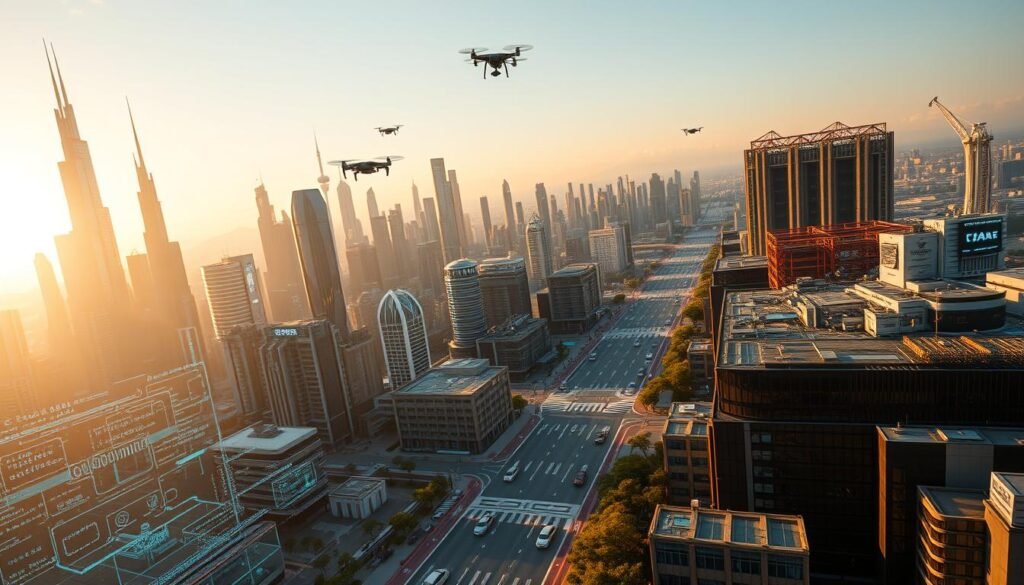
The world of software development is on the verge of a big change. New innovations are set to change how we make and use apps. It’s key to know the trends that will shape the future of software tech.
Low-Code and No-Code Development
Low-code and no-code platforms are becoming more popular. They let developers make apps fast and easy, using visual tools instead of coding. This method speeds up app creation and lets non-tech people get involved, helping businesses adapt quickly to market changes.
These platforms do more than just speed up development. They make tech more accessible to everyone. This means more people can help make software, leading to more innovation and teamwork in companies.
AI-Powered Development Tools
AI tools are also becoming a big part of software development. They use artificial intelligence to automate tasks like coding and bug finding. AI tools can look at lots of data to give insights, making software better and more reliable.
AI can predict problems and suggest solutions, making development more efficient. It lets developers work on more challenging and creative tasks. This drives innovation in software making.
If you want to know how these trends can help your business, contact info@consac.dev.
Cybersecurity in a Changing Landscape
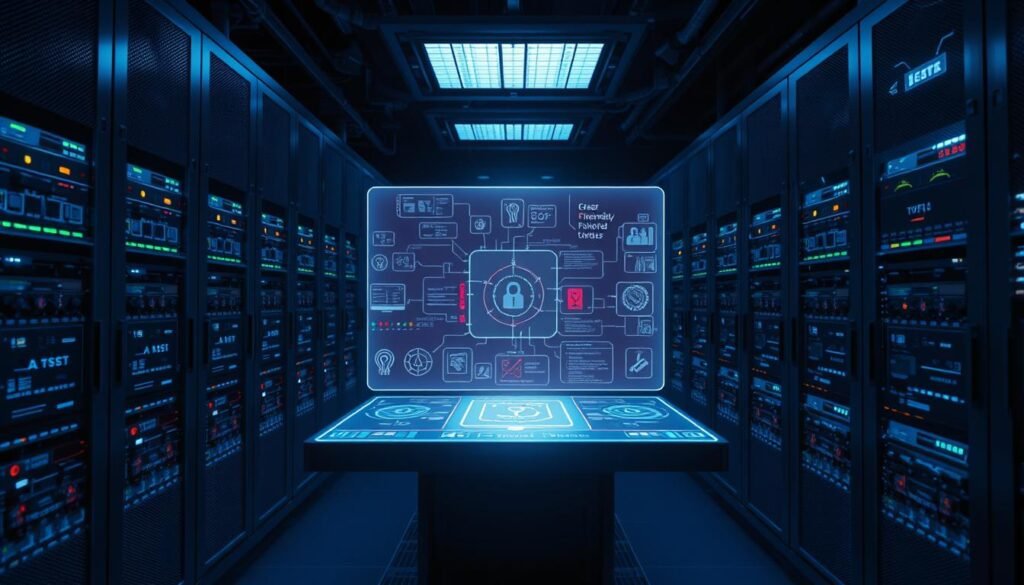
Cybersecurity is more important than ever as technology keeps getting better. We need to stay ahead of threats by using data-driven technologies. With more tech in our systems, we must protect them well.
How we fight cyber threats is changing. Now, we focus more on cyber resilience. This means not just stopping attacks but also bouncing back fast.
Importance of Cyber Resilience
Cyber resilience is key in today’s world. It helps organizations deal with cyber threats. With AI in IT, they can predict and respond to threats better.
Building cyber resilience involves a few steps:
- Regular risk checks to find weak spots
- Creating plans for when attacks happen, using AI
- Training staff to spot and handle new threats
Emerging Threats and Defense Strategies
New threats are coming as tech gets smarter. We face phishing, ransomware, and IoT attacks. To fight these, we need strong defense plans that use data-driven technologies.
Good defense strategies include:
- Strong encryption to keep data safe
- AI tools for finding unusual activity
- Keeping software and systems up to date
If you have questions about improving your cybersecurity, email info@consac.dev. We’re here to help you stay safe in the complex world of cybersecurity.
The Impact of 5G on IT Infrastructure

5G is more than just an upgrade; it’s a big change in how IT works. As we move to this new tech, businesses are changing how they work and talk to customers.
Advantages for Businesses
The benefits of 5G for businesses are many. Enhanced mobile broadband means faster data, making work better. Also, 5G opens up new ways for IoT, connecting lots of devices.
- Faster data transfer rates
- Increased IoT connectivity
- Improved mobile broadband
Let’s look at some examples of 5G’s power. In factories, 5G lets IoT devices check things in real time and predict when things might break. In healthcare, 5G makes remote doctor visits and big file sharing easier.
Implementation Challenges
But, there are hurdles to getting 5G up and running. One big one is the cost of updating to 5G. There’s also worry about security with more devices and data moving around.
| Challenge | Description | Potential Solution |
|---|---|---|
| Infrastructure Cost | High cost of upgrading to 5G-compatible infrastructure | Phased implementation, government incentives |
| Security Concerns | Increased risk of cyberattacks with higher data transfer rates | Enhanced security protocols, regular audits |
For businesses wanting to use 5G, they need a solid plan. This plan should tackle these challenges. This way, companies can really use 5G to their advantage and keep pushing IT forward.
For any questions or more info, please reach out to info@consac.dev.
The Rise of the Internet of Things (IoT)
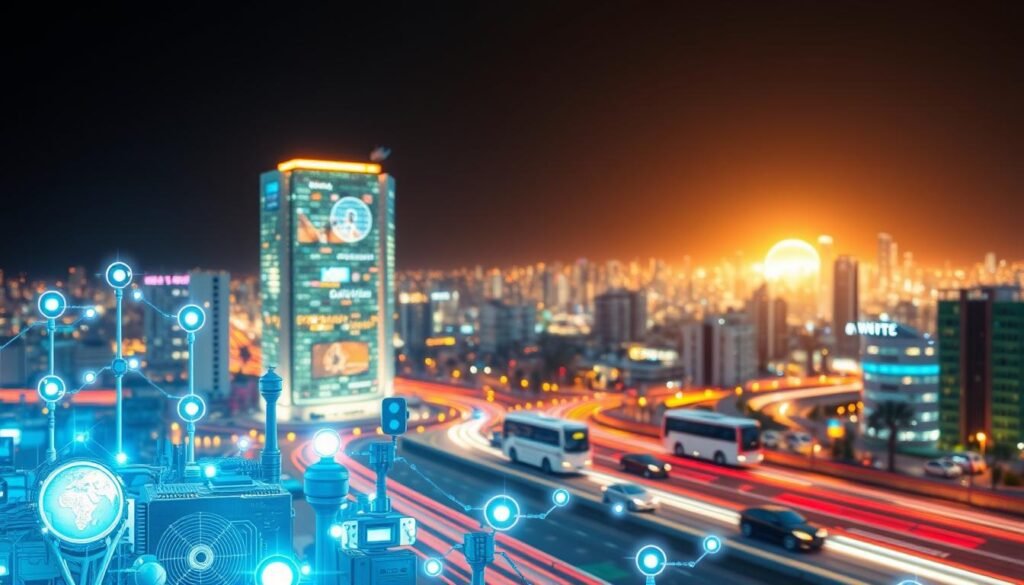
The Internet of Things (IoT) is changing how we see the world. It’s making the digital and physical worlds closer. IoT is a key player in our future, thanks to data-driven technologies.
Applications in Everyday Life
IoT is entering our daily lives in big ways. It’s making our homes smarter and our health easier to track. This technology is making our lives more convenient and efficient.
For example, smart homes adjust lighting and temperature for us. Wearable devices track our health. Industrial IoT is also making factories better, cutting downtime and improving quality.
Managing IoT Data Safely
IoT devices are creating a lot of data. Keeping this data safe is essential for IoT’s success. “The security of IoT devices is not just about protecting data; it’s about ensuring the safety and privacy of users.”
We need strong security measures like encryption and regular updates. Companies must follow data protection rules to keep our information safe.
For more on IoT and its uses, reach out to info@consac.dev.
Trends in Remote Work Technologies
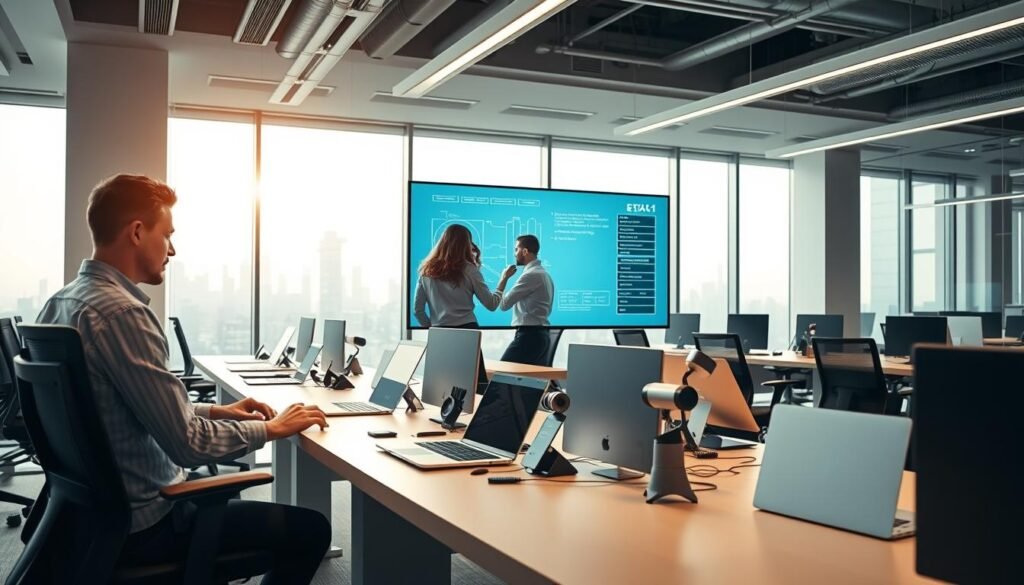
As we look ahead to 2025, remote work tech is getting better. The move to remote work has pushed for better tools and security. This makes teams around the world more productive and secure.
Collaborative Tools for Global Teams
Collaborative tools are key in remote work tech. They let teams work together, no matter where they are. Some top tools include:
- Project management software like Trello and Asana
- Video conferencing tools such as Zoom and Google Meet
- Instant messaging apps like Slack and Microsoft Teams
These tools help teams talk, organize tasks, and track progress. For example, project management software lets teams assign tasks and check on project status live.
Security Protocols for Remote Workers
With more people working remotely, keeping data safe is vital. Companies are using strong security to protect their data. Some key steps include:
| Security Measure | Description | Benefits |
|---|---|---|
| Multi-Factor Authentication (MFA) | Requires users to provide two or more verification factors to access a system or network. | Enhances security by making it harder for attackers to gain access. |
| Virtual Private Networks (VPNs) | Creates a secure, encrypted connection between a user’s device and a company’s network. | Protects data from being intercepted by hackers. |
| Regular Software Updates | Ensures that all software is up-to-date with the latest security patches. | Fixes vulnerabilities that could be exploited by attackers. |
For any questions or more info on remote work tech, reach out to info@consac.dev. We’re here to guide you through remote work solutions.
The Significance of Automation in Business

Automation is key in business, changing how we work and making things more efficient. With new tech, we see big improvements in how things get done and cost savings.
Process Automation Technologies
At the heart of this change are process automation technologies. Using AI-powered development tools, companies can automate tasks, make processes smoother, and boost productivity. This cuts costs and lets workers tackle tasks that need creativity and strategy.
Also, using these technologies is a big IT development trend. Businesses are putting a lot of money into them to keep up in a fast-changing market.
Benefits of Robotic Process Automation (RPA)
Robotic Process Automation (RPA) automates tasks with software robots. It brings many benefits, like better accuracy, faster processing, and more scalability. It frees up resources for more important tasks.
RPA also makes things flexible and adaptable. It can quickly change to meet new business needs, making it a valuable asset in today’s fast business world.
For more on how automation can help your business, reach out to info@consac.dev.
Sustainability in IT Development
Sustainability in IT is now a key focus for the industry’s future. As people worry more about the environment, IT must adopt green practices and cut its carbon footprint.
The IT sector is moving towards sustainability, driven by environmental worries and new tech. This change is not just about saving energy. It’s about rethinking the whole life cycle of IT products and services.
Eco-Friendly Technology Practices
Eco-friendly tech practices are essential for sustainable IT. These include:
- Designing energy-efficient data centers
- Implementing e-waste recycling programs
- Using sustainable materials in hardware production
- Optimizing software for reduced energy consumption
By using these practices, IT companies can lessen their environmental harm. For example, energy-efficient data centers save money and use less non-renewable energy.
Green Data Centers and Cloud Services
Green data centers and cloud services are key for sustainable IT. They enable:
- Less energy use with advanced cooling systems
- More use of renewable energy
- Better resource use through virtualization
- More scalability and flexibility
Cloud services, in particular, offer scalable, on-demand infrastructure for energy efficiency. Moving to the cloud can cut carbon emissions and save money through scale.
For more info on sustainable IT, contact info@consac.dev. We help businesses adopt greener IT practices.
| Sustainable IT Practice | Benefits | Implementation Strategies |
|---|---|---|
| Eco-friendly data centers | Reduced energy consumption, lower costs | Advanced cooling systems, renewable energy |
| E-waste recycling | Reduced environmental impact | Partner with e-waste recycling firms |
| Sustainable hardware | Less environmental footprint | Use of sustainable materials, design for recyclability |
Preparing for IT Challenges in 2025
The IT world is changing fast, and we’re looking ahead to 2025. To stay on top, companies need to focus on training their IT teams. They must learn about new software trends and how to innovate in IT.
Developing Key Skills
IT workers will have to get better at using new tech like AI, quantum computing, and edge computing. By improving in these areas, companies can lead in innovation and stay ahead.
Staying Ahead of Technological Change
Keeping up with tech changes is key. Companies should encourage a culture of learning and innovation. For more on IT innovation strategies, reach out to info@consac.dev.
